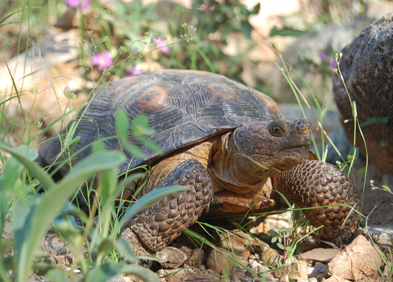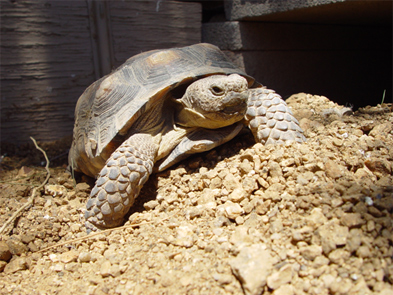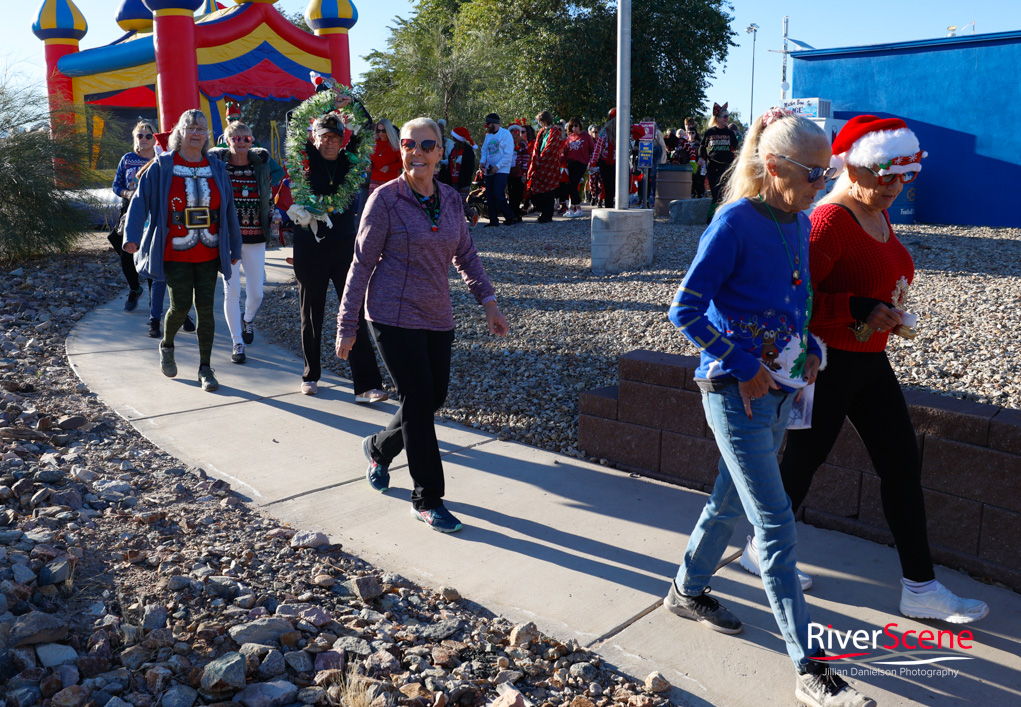By Jayne Hanson
The Arizona Game and Fish Department’s Desert Tortoise Adoption Program is once again offering its annual adoption program of native, captive Sonoran Desert Tortoise to Arizona residents.
These adorable, non-traditional pets cannot be released back into the wild for the looming risk of decimating wild desert tortoise populations with the spread of disease. These particular pets can live 80-100 years, so careful consideration is strongly suggested. Interested applicants must first apply and allow 14 days for the application to process. Read on for more information.
What they eat and drink – They’re herbivorous, think greens!
From the grocery store: dark greens such as collard, kale, mustard greens, turnip greens, cilantro, and parsley can be offered, too. The greens should be fresh, cleaned, and chopped into small pieces and served on a dish or feeding platform. Avoid iceberg lettuce as it has minimal nutritional value; fruits (allowed as a treat once per month) because of the high sugar levels; proteins and animal fats because they are known to impair organ functions in the tortoise and lead to an untimely death.
Or, it can be planted for them: natural desert grasses, leafy plants, stems, and desert flowers are best and can be planted within the tortoise’s 6-foot by 6-foot enclosure to allow for grazing. Visit the Arizona Native Plant Society website for more information. https://aznps.com/
Water is required.
A few inches of clean water in a shallow dish that is large enough for them to sit in. The tortoise may soak itself in the dish more often than it is seen actually drinking as it gets most of its water through its leafy diet.
They need a shelter, somewhere cool and dry.
This is for protection from extreme summer heat and dryness, and to provide a place for hibernation in winter. Shelters should be well insulated by adding soil to the top, sides and bottom of the structure. In the wild, they prefer a snug shelter space so don’t make it too roomy. Avoid sunny areas and south-facing shelters as they can warm up quickly. North and northeast facing shelters tend to be cooler. More than one shelter provides the pet a few choices, if one feels so inclined.
Cold Weather Care is important.
Tortoises are to be kept outdoors year-round in areas such as Lake Havasu City, as it is within their natural habitat. Prescott-area tortoise owners will require indoor hibernation. See AZGFD website for specifics. As weather cools, the tortoise’s appetite and activity with decrease as it prepares for hibernation in its shelter. If the tortoise has not moved into its shelter when night temps are below 50 degrees, the pet must be sheltered in a cool, dark area of a garage or other room.
Where there is concern:
- These pets are not a good fit with even the most behaved dogs.
- Children should not be solely responsible for a desert tortoise.
- Salmonella bacteria always is present. Practice good handwashing after handling and do not allow young children to put any part of the tortoise in their mouths.
- A tortoise that does not hibernate may be ill and should be taken to a veterinarian.
It is illegal:
- To release a captive tortoise into the wild, it could decimate wild populations of tortoises with disease.
- To breed captive desert tortoises. Hatchlings and the female tortoise must be surrendered to the Tortoise Adoption Program.
- To remove desert tortoises from the wild.
Please review the AZGFD’s Tortoise Adoption Program website to see if it’s a good fit for you! Please keep in mind that a daytrip of travel may be involved in collecting your tortoise if you’re adoption application is approved.
To apply online for a Desert Tortoise, click HERE.





















I have a 14 Month old Sulcata tortoise he is doing very good and I was looking for a some tortoise 🐢